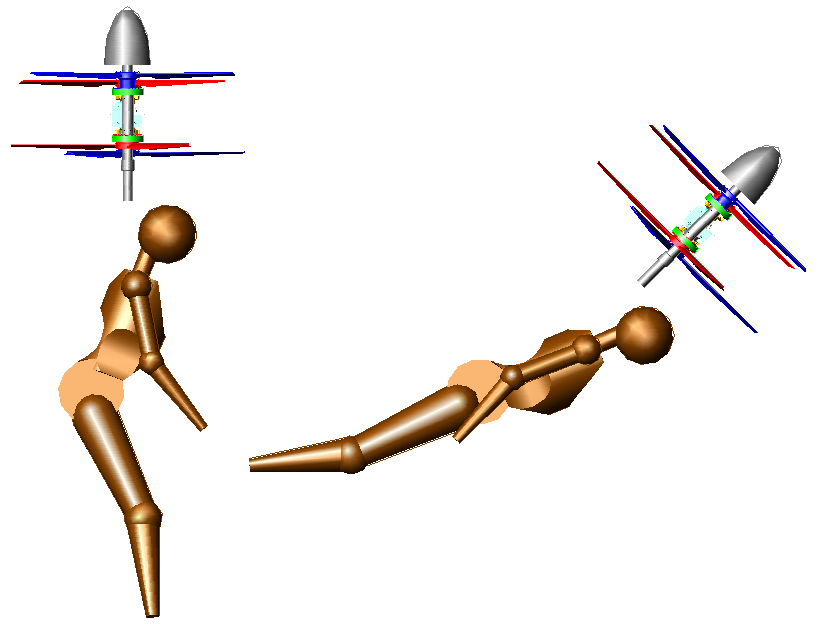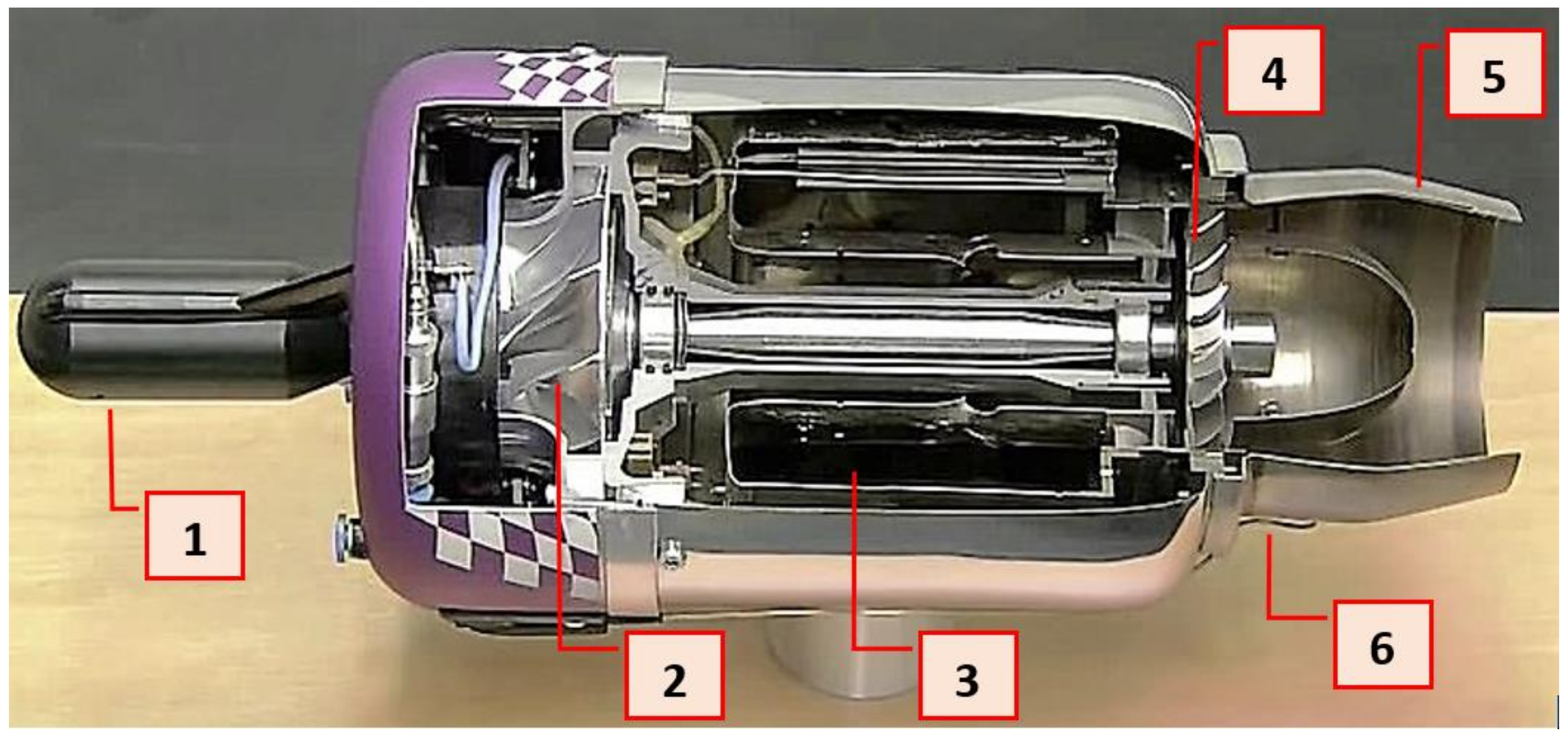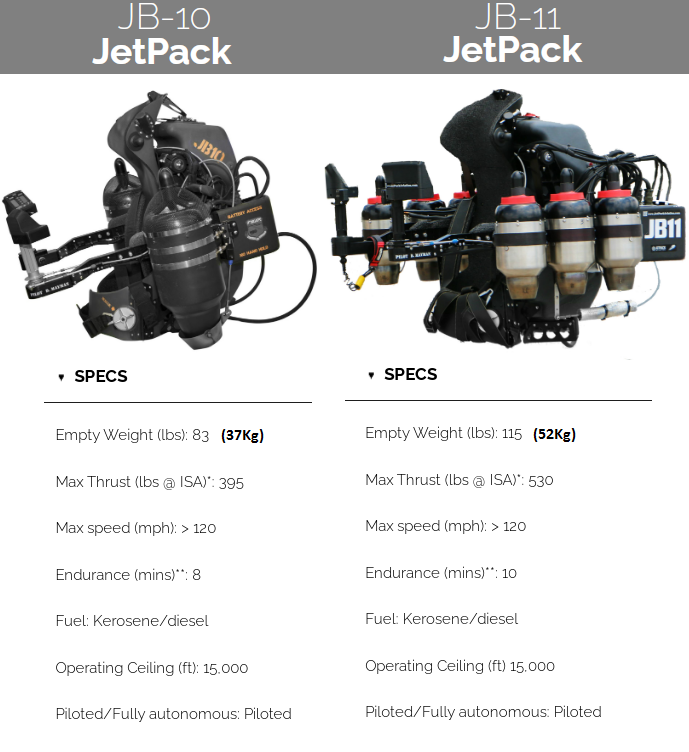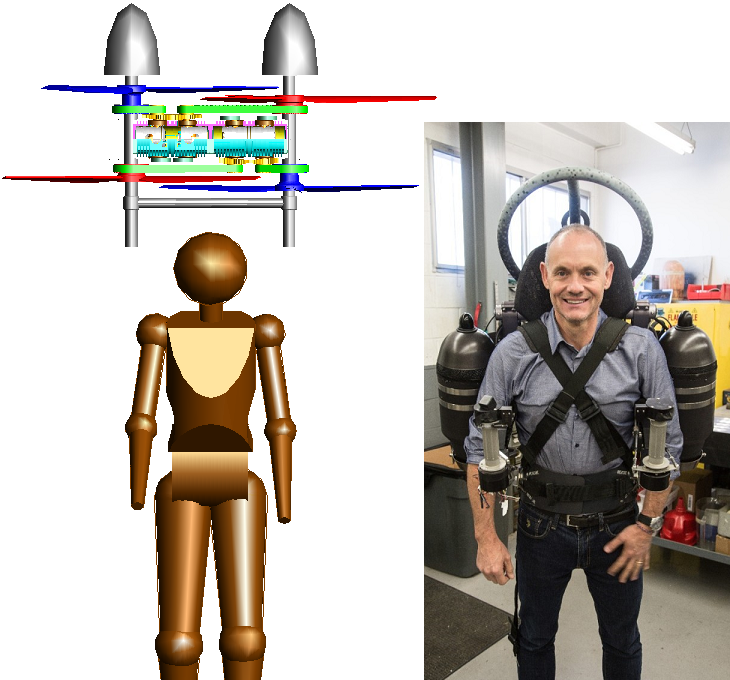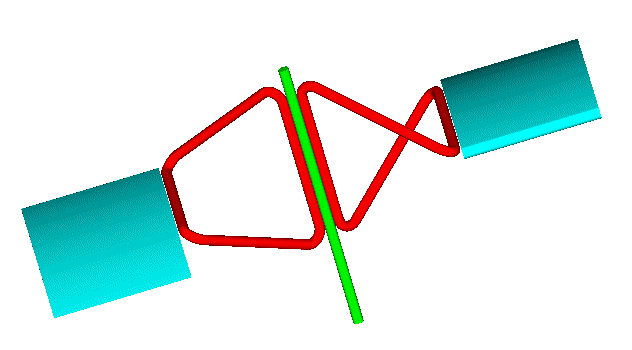Hello Gruntguru
You write:
“If the thrust axis passes through the pivot point connecting the upper and lower masses, the full weight of the power unit is generating a moment which must be reacted by the pilot's musculoskeletal system.”
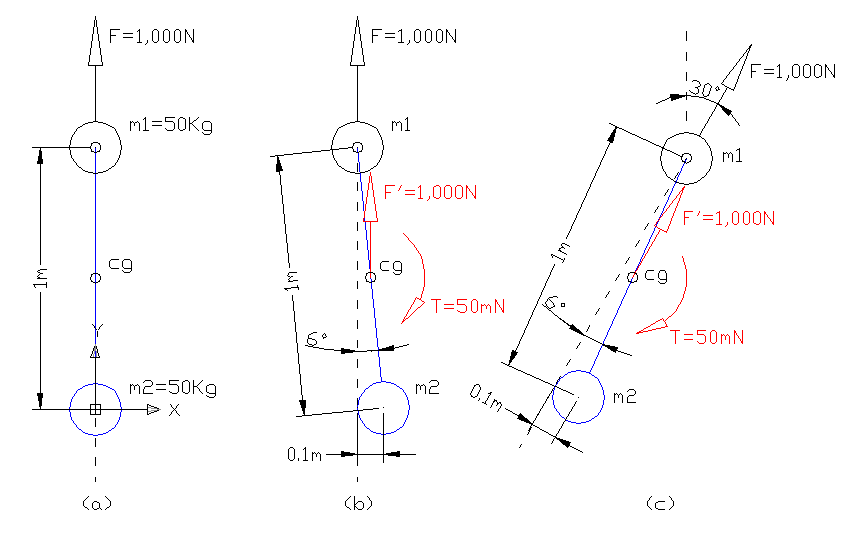
The pivot is at the center of gravity of the upper mass (comprising the power unit and the torso / back of the pilot), and the thrust force F passes permanently through the pivot.
No torque is created by the upper body.
If, say, you separate the “torso / back” (still secured with the power unit) from the rest body of the pilot, the assembly will fly without any tendency to turn (
Pendulum Rocket Fallacy, again).
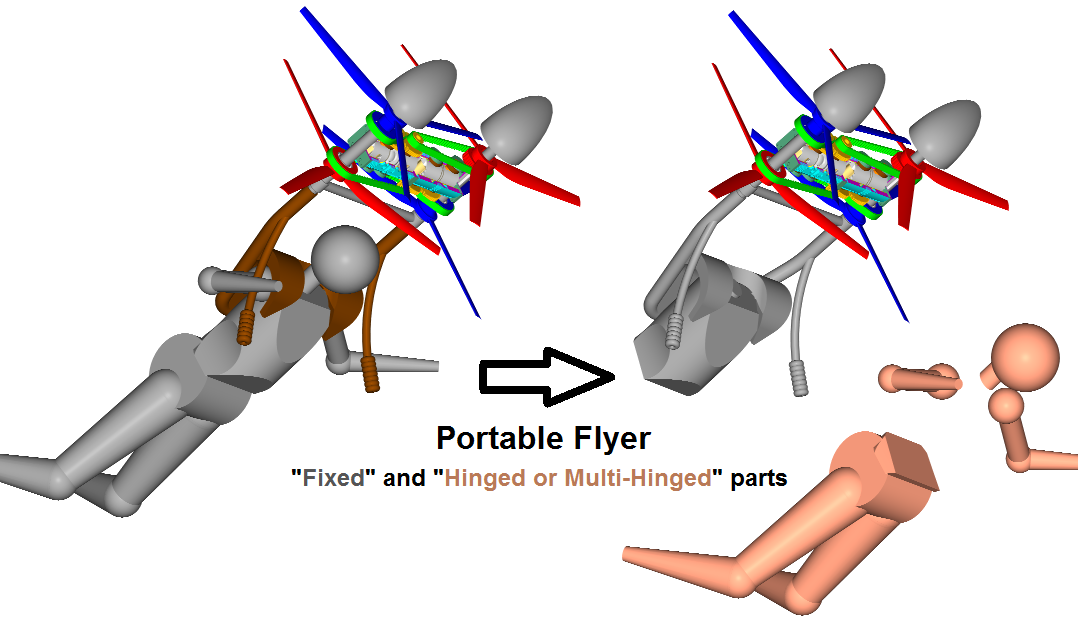
I.e. if you leave the upper-right assembly free, with the engines running, it will fly parallel to its initial orientation (at least until some disturbances to turn it slowly / randomly).
By adding the limbs / head, you give to the system “control”, because these masses (head / limbs) can displace to shift the overall center of gravity relative to the thrust axis.
The pilot has to displace his arms, legs and head relative to the torso / back, and this does require “some” effort.
The question is: how much effort, and for how long?
Please stand on one leg and move your other leg around, keeping it at, say, 45 degrees from vertical.
How difficult it is?
Its center of gravity is displaced some 70% than if it was lifted completely horizontal.
Do the same with your arms and head.
These are simple / easy motions every person performs several times per day, without noticing it.
For instance, when you take books for the top shelf of a tall bookcase, you perform all these motions, and more: say, you stand on your left leg, your right leg is shifted / extended sideways for equilibrium, you right arms goes as upwards as possible, your head / neck bends backwards to look at the books that your right hand is to catch.
Worth to mention: the corrections (“weight displacement control”) are applied from time to time; i.e. the displacement of the center of gravity away from the thrust axis lasts until the thrust axis is re-vectored towards the desirable direction; then the center of gravity gets back near the thrust axis, and the “effort” minimizes.
You also write:
“Imagine the pilot is lying face-down on a table. The table represents the lift on the pilot's body or wing suit. The power unit extends beyond the edge of the table. Its weight makes it tend to point down. Not desirable.”
This is not the case with the Portable Flyer.
The thrust force from the propellers lifts the power unit and pilot’s torso / back, not the muscles /bones supported on pilot’s lower body.
- Even if the propeller axes turn horizontal, the pilot can always recover to hovering (earlier posts).
It is not too different than walking: you know that if you lean too much, you fall, so you keep your body leaning into the allowable / safe limits.
The same happens with pilot’s legs at horizontal cruising.
The high speed air keeps them near horizontal, not the muscles / bones connecting them to the upper body. They are like lying on an air mattress.
It is like the cloths / laundry hanged from a rope to dry. The wind keeps them away from vertical. The strong wind can keep them almost horizontal.
Thanks
Manolis Pattakos

